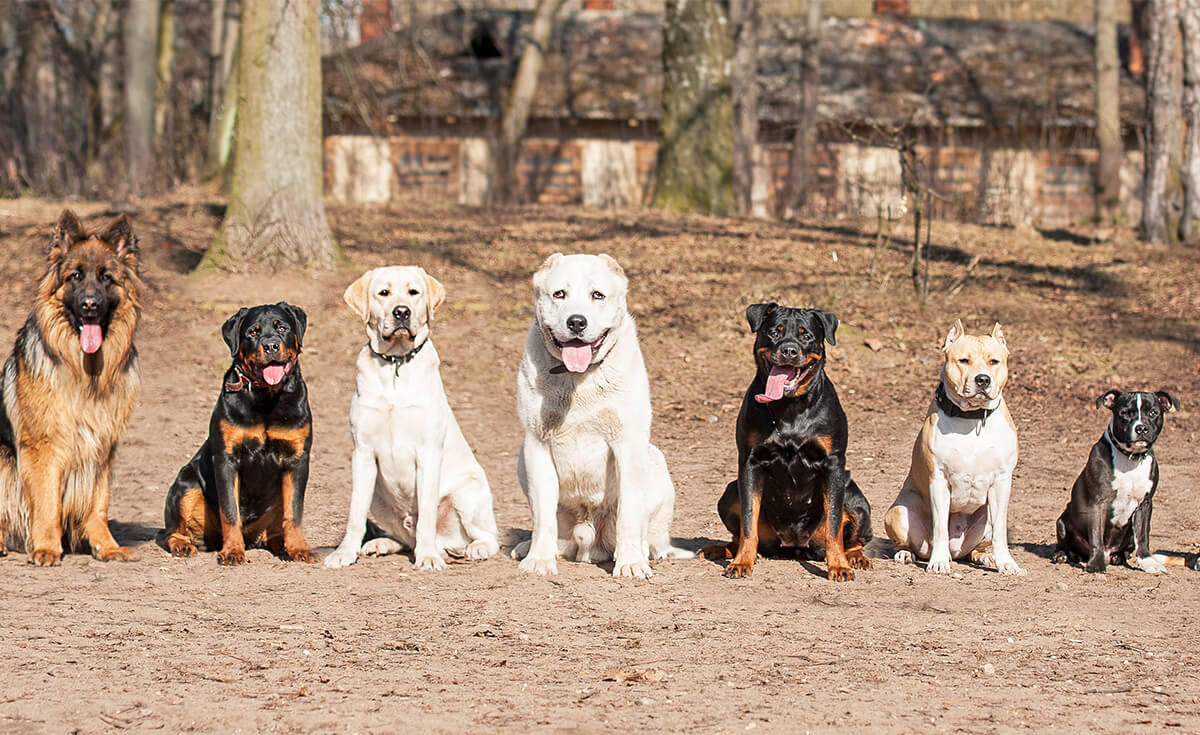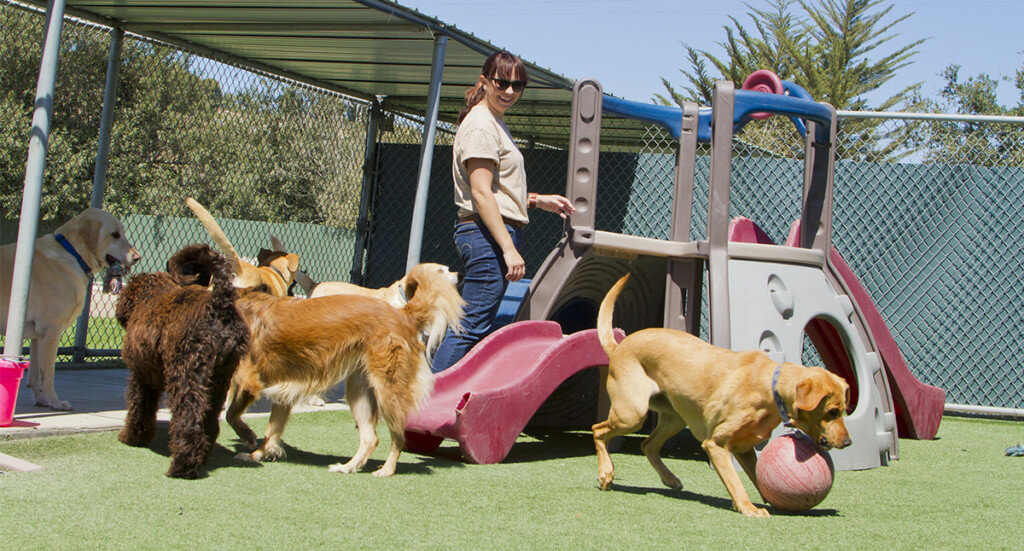Can Dog Board and Train Programs Transform Your Pet’s Behavior?
Training your dog can be a daunting task, especially when their behavior proves challenging. That’s why dog board and train programs are becoming increasingly popular among pup parents.
These special programs are designed to train dogs, help socialize them, and address behavioral problems. The end result? A more relaxed, better-behaved dog that can comfortably live alongside you.
In this post, we’ll explain more about these programs, what they include, their benefits and drawbacks, and how to choose the right one. By the end, you’ll have a better idea of whether a board and train program is right for your four-legged friend. Ready to get started? Then let’s dive in!

What is Dog Board and Train?
Dog board and train is a comprehensive type of dog training program. Instead of visiting a training center or having a trainer come to you, your dog is left in the care of a facility for an extended period to receive professional training.
Dog board and train programs, often compared to boot camps for dogs, serve a twofold purpose: socialization and behavior modification.
This immersive training environment is designed not just for instilling basic obedience and correcting behavioral issues but also offers intensive social interaction allowing dogs to learn good etiquette around other dogs.
This type of program can be especially beneficial if your furry friend struggles with specific problem behaviors or isn’t responding well to basic training attempts at home.
Length of Stay
Dog board and train programs typically require your pup to stay at the dog boarding training facility for two or more weeks. This duration is designed to give professional dog trainers ample time to implement effective dog training techniques and ensure behavior modification.
It’s essential to understand that this length of stay does not mean your pet will return home fully trained. Instead, it serves as an intensive jumpstart for good behavior and obedience training fueled by daily routines, activities, and socialization opportunities with other dogs.
Your selected program might last even longer depending on your dog’s specific needs and behavioral issues. These extended stays aim at complete immersion in a structured environment where consistency reigns supreme, helping reinforce the new behaviors learned.
So, whether you’re looking into puppy training services or seeking help from a dog behavior specialist for adult dogs, remember that patience is key. Profound changes take time but are definitely worth the wait!
Training Methods and Techniques
Dog board and train programs utilize a variety of training methods and techniques, tailored to your pet’s specific needs. Techniques range from positive reinforcement tactics such as treats, praise, or toy rewards, to obedience classes where dogs learn commands like sit, stay, or fetch.
Off-leash dog training may also be included, which is important for safety in public spaces. In some cases, a behaviorist may be brought in for more intensive professional dog training and behavior modification if there are issues like aggression or separation anxiety.
Exercise plays a key role in these programs too, with dogs participating in regular physical activities that stimulate their bodies and minds. Not only does this help keep them fit and healthy but it also aids with improving socialization skills among other dogs.

All trainers at these facilities are professional dog trainers who have deep knowledge about different breeds’ temperament and learning pace. They work on establishing good habits while eradicating unwanted behaviors through consistent teaching methods over time.
Pros and Cons of Dog Board and Train Programs
In this section, we’ll highlight the pros and cons of dog board and train programs. Knowing both sides will help you make the best decision for your dog’s training.
Benefits of Professional Training
- Professional trainers are experienced and skilled in dog behavior and training techniques.
- They can assess your dog’s individual needs and tailor a training plan specifically for them.
- Professional trainers can address specific behavioral issues such as aggression, separation anxiety, or excessive barking.
- They have access to various training tools and equipment that can aid in the training process.
- Professional training programs provide a structured environment for dogs to learn and thrive.
- Trainers can teach your dog obedience commands such as sit, stay, come, and heel.
- They can also work on more advanced skills like off-leash training or agility training.
- Professional trainers use positive reinforcement techniques that reward good behavior, creating a positive learning experience for your dog.
- They can help improve your communication with your dog, strengthening the bond between you and your furry friend.
- Professional training programs often provide follow-up support and guidance after the program ends, ensuring continued success in maintaining the trained behaviors.
Remember, professional training is an investment in your dog’s future and can lead to a well-behaved and happy companion.
Potential Drawbacks and Concerns
While dog board and train programs can be beneficial for many pet parents, it’s important to consider some potential drawbacks and concerns before enrolling your pup. Here are a few things to keep in mind:
- Limited owner involvement. With your dog staying at the training facility, you may have limited opportunities to actively participate in the training process. This can make it difficult for you to learn how to reinforce the training once your dog returns home.
- Lack of consistency. Since the trainer is responsible for your dog’s daily routine and training, there may be inconsistencies when transitioning back home. It’s important to have clear communication with the trainer about expectations and goals, as well as follow-up support after your dog comes back home.
- Separation anxiety. Being away from their owners and familiar surroundings can cause some dogs to experience separation anxiety during their stay at the boarding facility. It’s essential to ensure that the facility has proper measures in place to address these concerns and provide a comfortable environment for your pup.
- Limited customization. Board and train programs typically have a set curriculum designed for general obedience training or addressing specific behavior issues. However, every dog is unique, and their needs may not fit into a one-size-fits-all program. Ensure that the trainer can tailor the program to suit your dog’s individual personality and requirements.
- Cost. Dog board and train programs can be quite expensive compared to other forms of training. Consider whether this investment aligns with your budget and if there are alternative options available that may also be effective for your dog’s training needs.
- Skills transfer. While board and train programs can jumpstart good behavior, there’s no guarantee that those skills will transfer seamlessly back into a home environment. It will still require ongoing reinforcement and practice from both you and your pup.
- Health concerns. When sending your dog away for training, there’s always a risk of them being exposed to illnesses from other dogs at the facility. Ensure that the boarding center has proper hygiene and vaccination protocols in place to minimize these risks.
- Trusting the trainer. Research and choose a reputable trainer with proven experience and positive reviews. It’s crucial to have trust in the trainer’s methods and techniques, as they will be responsible for your dog’s wellbeing and training progress during their stay.
Preparing Your Dog for Board and Train
Thinking about enrolling your dog in a board and train program? Keep reading for a rundown of how to prepare your pet for this new experience.
Assessing Your Dog’s Needs and Behavior
To ensure the success of a dog board and train program, it’s crucial to assess your dog’s specific needs and behavior. Take the time to observe their behavior patterns, noting any problematic behaviors or areas for improvement.
Consider if your dog struggles with basic obedience commands, has difficulty with socialization, or exhibits any aggressive tendencies.
It can also be helpful to consult with a professional trainer or behaviorist who can provide insights into your dog’s behavior and individual needs. By understanding your pup’s unique challenges, you’ll be better equipped to choose a board and train program that addresses those specific issues.
Researching and Choosing a Trainer
Finding the right trainer for your dog is crucial when considering a board and train program. Start by researching local trainers who specialize in behavior modification or obedience training.
Look for trainers who have experience working with your dog’s specific breed or behavioral issues. It’s also a good idea to read reviews and ask for recommendations from other pet owners or your veterinarian.
Additionally, it’s important to choose a trainer who uses positive reinforcement techniques rather than harsh, punishment-based methods. Consider visiting the facility and observing a training session before making a decision.
Understanding the Cost and Commitment
Before enrolling your dog in a board and train program, it’s vital to understand the cost and commitment involved. These programs can range in price depending on the length of stay, training methods used, and the reputation of the trainer or facility.
While they can be a significant investment, they also offer intensive and focused training for your dog. It’s crucial to research different trainers and facilities to find one that aligns with your budget and preferences.
Additionally, keep in mind that while board and train programs can provide effective results, they’re not a quick fix solution. Consistency is key even after your canine companion returns home, as continued reinforcement will help solidify their newly learned behaviors.
What to Expect from a Dog Board and Train Program
In a dog board and train program, your dog will follow a daily routine of structured activities and training sessions. Here’s a quick overview of what’s typically involved:
Daily Routine and Activities
A typical day in a dog board and train program is structured and filled with various activities to provide your pup with a well-rounded training experience. Here’s what you can expect from their daily routine:
- Dogs receive regular exercise through walks, playtime, and supervised socialization with other dogs, helping them burn off energy and stay fit.
- Training sessions are conducted multiple times a day, focusing on obedience commands, behavioral modification, and specific skills based on your dog’s needs.
- Dogs participate in group training sessions to learn how to interact appropriately with other dogs and humans.
- Individualized attention is given to address any specific behavior issues or challenges your dog may be facing.
- Crate training is often included as part of the daily routine to help dogs become comfortable in their crates and establish a sense of security.
- Mealtime is scheduled at specific times to maintain structure and prevent unhealthy behaviors such as begging or food aggression.
- Rest periods are incorporated into the daily schedule to give dogs time to relax and process their training sessions.
- Mental stimulation activities, such as puzzle toys or scent work, are included to keep your dog’s mind engaged and prevent boredom.
Follow-up Support and Transition Back Home
After completing a dog board and train program, it’s important for pet parents to understand the follow-up support and transition back home. Professional trainers usually provide ongoing assistance to ensure that your dog’s newly learned behaviors are maintained long after they leave the training facility.
This may include phone consultations, in-home visits, private lessons, or additional training sessions if needed. The trainer will guide you on how to continue reinforcing the lessons learned during the program, track your dog’s progress, and address any concerns or challenges you may have.
Expect a transition period when your dog returns home, as they adjust to their familiar environment while practicing their new skills. Remember that consistency is key during this time, so make sure to follow through with what you’ve learned from the trainer and maintain a structured routine for your furry friend.
Our Earthborn Holistic grain-free treats can enhance your dog’s transition back home. Perfect for training, these treats are healthy, tasty, and come in resealable bags for freshness. The soft EarthBites are easy to break into smaller pieces, making them an effective training aid. Use these treats for positive reinforcement as your dog practices their new skills.

Is Dog Board and Train Worth It?
As discussed earlier, the decision to enroll your pup in a dog board and train program is not to be taken lightly. In this section, we’ll recap some of the most vital aspects to consider along with a few additional key factors.
Factors to Consider
Here’s an overview of the most important factors to consider when deciding whether a dog board and train program is right for your pup:
- Training needs. Assess your dog’s training needs and behavior issues. Are they struggling with basic obedience commands or specific problem behaviors? Determine if a board and train program can effectively address these issues.
- Time commitment. Consider the length of the program and the time you’re willing to commit to your dog’s training. Board and train programs typically last for two or more weeks, during which your dog will be away from home.
- Trainer expertise. Research and choose a trainer who specializes in board and train programs. Look for trainers with experience, certifications, and positive reviews from other pet parents.
- Training methods. Learn about the training methods used in the program. Are they based on positive reinforcement techniques or use punishment-based methods? Positive reinforcement is proven to be more effective and humane in training dogs.
- Follow-up support. Inquire about the follow-up support provided after completion of the board and train program. Will there be additional lessons or guidance offered to ensure a smooth transition back home?
- Budget. Understand the cost involved in a board and train program. Prices can vary depending on the length of stay, level of training required, location of the facility, and other factors.
- Health and safety. Ensure that the facility has proper health protocols in place, such as vaccination requirements, clean living spaces, and attentive staff members.
- Socialization opportunities. Find out if the board and train program includes opportunities for socializing with other dogs or people. Socialization is crucial for a well-rounded canine companion.
Discussing Expectations and Goals with the Trainer
Before enrolling your dog in a board and train program, it’s crucial to have an open and honest discussion with the trainer about your expectations and goals. This conversation will help ensure that both you and the trainer are on the same page when it comes to what you want to achieve during your dog’s stay.
You should communicate any specific behaviors or skills you would like your dog to learn or improve upon, as well as any concerns or issues you may have. By setting clear expectations from the start, you increase the chances of a successful training experience for your dog.
Dog Board and Train: Top 7 Takeaways
- Dog board and train programs are like boot camps for dogs, offering socialization and behavior modification training.
- These programs typically require dogs to stay at a board and train facility for two or more weeks, with professional trainers implementing various techniques tailored to the dog’s needs.
- Benefits of dog board and train include access to experienced trainers, tailored training plans, and addressing specific behavioral issues. You can also expect structured environments for learning, obedience command teaching, positive reinforcement techniques, improved communication with your dog, and follow-up support after the program ends.
- Potential drawbacks include limited owner involvement in the training process, potential inconsistencies when transitioning back home, and separation anxiety concerns. Limited customization of programs to individual dogs’ needs and cost considerations compared to other training options may also be drawbacks for some pet parents.
- It’s important to assess your dog’s specific needs and behavior before considering a board and train program. Researching reputable trainers who use positive reinforcement techniques is crucial in finding the right fit.
- Expectations in a dog board and train program include a structured daily routine with exercise activities. Training sessions focus on obedience commands and behavior modification. Socialization with other dogs is also part of the program.
- Continued reinforcement at home is necessary even after completing a board and train program for long-term success.
Is a Dog Board and Train Program Right for Your Pup?
Dog board and train programs can be a valuable option for pet parents looking to address behavioral issues or provide intensive training for their dogs. While there are both pros and cons to consider, the benefits of professional training and the potential for long-term behavior improvement make these programs worth exploring.
By thoroughly researching and choosing a reputable trainer, discussing expectations and goals, and evaluating your dog’s specific needs, you can make an informed decision about whether dog board and train is the right choice for you and your furry friend.




